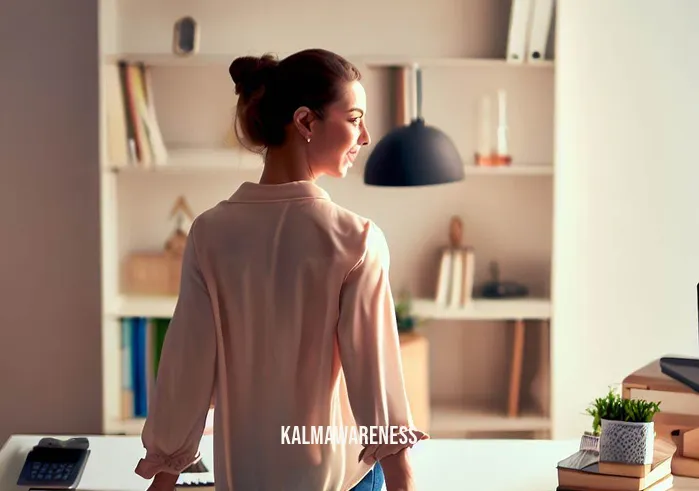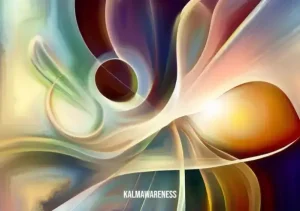The Enlightening Journey of Meditation Float: An Introduction
Meditation, an ancient practice rooted deep within various cultures, has manifested in diverse forms throughout human history. As the modern world grapples with a plethora of distractions, stressors, and mental health challenges, one unique form of meditation stands out—meditation float. Combining the essence of mindfulness with sensory deprivation, this holistic approach not only promotes relaxation but also delves into the deeper facets of our psyche, offering a transformative experience.
The Roots of Meditation and Mindfulness
Historically, humans have always sought ways to connect with their inner selves and the universe at large. From the ancient African meditation techniques that have been passed down generations to practices that merge movement with mindfulness like mindful martial arts and meditation in motion, the journey has been diverse. Each of these methods targets the enhancement of our ‘mindful muscle’, a term that essentially relates to the development of our innate ability to be present. To truly grasp its significance, one needs to understand what mindful muscle truly embodies.
“Life is available only in the present moment.” – Life is Available Only in the Present Moment
Sensory Deprivation: The Heart of Meditation Float
The concept of sensory deprivation in meditation float is rooted in the idea of isolating oneself from external stimuli. Imagine being cocooned in a space where external distractions like sight, sound, and touch are minimized. This environment amplifies your internal experiences, helping you to confront, understand, and eventually let go of deeply ingrained habitual thinking patterns.
The Mental Health Paradigm
In a world where mental health issues are rapidly escalating, there’s an ever-growing need for alternative therapies. From practices like gratitude yoga in Princeton to mindful hiking, the quest for holistic well-being is paramount. Within this realm, meditation float emerges as a beacon for those seeking solace from the chaos of the external world. Given its impact on mental well-being, it’s no wonder that organizations are increasingly investing in a meditation consultant to integrate these practices at the workplace.
Meditation Float & Broader Mindfulness Practices
While meditation float remains a focal point, it’s essential to see it as part of a larger tapestry of mindfulness. For the younger generation, there are mindfulness books for teens that serve as guides. Schools have even begun to incorporate meditation stories for students, ensuring they harness the benefits of mindfulness early on. Furthermore, the concept of micromeditating is gaining traction, emphasizing that even brief moments of mindfulness can have profound impacts.
The Road Ahead
As we proceed to delve deeper into this enlightening journey, it’s crucial to keep an open mind. Meditation float, though transformative, is but a single facet of a vast realm of mindfulness practices. Whether you’re a seasoned practitioner or a novice, the subsequent segments will offer a holistic view, from the science behind the practice to its real-world implications.
Before moving on, take a deep breath. Embrace the present. As we’ll explore in the next segment, the very act of breathing holds mysteries that can unravel the path to mindfulness.
Continue reading to understand the intricate relationship between meditation float, breathing, and the broader spectrum of mindfulness practices.

The Subtle Waves of Meditation Float: Riding the Currents Within
Meditation float, a remarkable convergence of mindfulness and sensory isolation, has become a cornerstone in the realm of alternative therapy. Often referred to by varied names—floatation therapy, sensory deprivation meditation, or isolation tank therapy—it stands out for its unique approach. In this chapter, we will delve deeper, unravelling the intricate layers of this therapeutic marvel.
The Mechanics Behind Meditation Float
Floatation therapy is more than just a relaxation technique; it’s a profound experience that interweaves multiple aspects of mental well-being. Let’s explore some of its core components:
- Isolation Tanks: These are specially designed tanks filled with a saline solution that enables individuals to float effortlessly, creating a gravity-free sensation.
- Silent Sanctuary: With minimal external stimuli, the tanks offer a silent cocoon, fostering deeper introspection.
- Epsom Salts: Rich in magnesium, these salts not only aid in floating but also offer therapeutic muscle relaxation.
- Dimmed Lights: Some floatation tanks come with the option of dimmed lights, further amplifying the sensory deprivation experience.
- Thermal Comfort: The water’s temperature is usually set to match the skin’s, blurring the line between the body and the environment.
These elements converge, creating a space that transports individuals away from the cacophony of daily life. The significance of this experience is even more pronounced when viewed against practices such as mindful en español or mindful skills, which emphasize mindfulness in various contexts.
The Multifaceted Benefits: A Tabular Overview
Understanding the benefits of meditation float becomes easier when presented in a structured format. Below is a table that outlines its advantages:
| Aspect of Well-being | Benefit | Outcome |
|---|---|---|
| Physical | Muscle Relaxation | Alleviation of physical strain and pain. |
| Mental | Decreased Anxiety | Enhanced calm and emotional stability. |
| Emotional | Enhanced Self-awareness | Improved understanding of one’s feelings and reactions. |
| Cognitive | Sharpened Focus | Increased clarity in decision-making. |
| Spiritual | Connection to the Inner Self | A profound sense of unity with the universe. |
Meditation Float vs. Traditional Meditation
While meditation float offers a unique experience, how does it compare to traditional meditation forms? Here’s a quick rundown:
- Environment: Traditional meditation can be practiced anywhere—from mindful hiking trails to dedicated meditation spaces. In contrast, floatation therapy necessitates a specific environment—the isolation tank.
- Sensory Experience: Standard meditation encourages an awareness of surroundings, while meditation float emphasizes sensory deprivation.
- Duration: Floatation sessions typically last between 60 to 90 minutes, while traditional meditation can range from a few minutes of micromeditating to hours of deep meditation.
While both have their merits, choosing between them depends on individual preferences and the desired outcomes.
Transcending Borders: Global Acceptance
Interestingly, meditation float isn’t just a western marvel. It resonates across cultures. For instance, while the West might explore it alongside mindful miracle practices, in other regions, it’s aligned with age-old traditions and techniques.
Consequently, this global acceptance highlights its universal appeal, bridging the gap between modern therapeutic techniques and ancient wisdom.
Gearing Up for the Next Dive
Having traversed the depths of meditation float, one might wonder, what more lies beneath? The answer? A plethora. As we transition to our next chapter, prepare to immerse yourself further, exploring nuances, narratives, and the novel transformations this practice can induce. Stay buoyant, for the profound depths of meditation float are about to get even more intriguing.
Stay tuned and continue reading as we embark on an even more enlightening journey in the realm of meditation float.

Floating Towards Hope: Inspirational Waves of Meditation Float
The journey of meditation float doesn’t just offer relaxation and mental clarity; it has also become a beacon of hope for many. This unique form of mindfulness creates ripples of inspiration that extend far beyond the confines of the isolation tank, touching souls and reshaping lives.
The Power of Stillness in a Turbulent World
In a world overwhelmed by noise, chaos, and perpetual motion, the solace of stillness becomes invaluable. Sensory deprivation meditation gives individuals a rare chance to retreat into silence, helping them find clarity amidst confusion. It is aptly captured in this quote:
“Within you, there is a stillness and a sanctuary to which you can retreat at any time and be yourself.” – Hermann Hesse
This stillness is not just the absence of noise; it’s a space where individuals reconnect with their inner selves, untangling webs of stress and anxiety.
Stories of Transformation
Ella’s Journey from Despair to Hope: A 32-year-old graphic designer, Ella, found herself sinking into depression. Medications and traditional therapy provided little relief. That’s when she stumbled upon meditation in motion. A combination of floatation therapy and mindful movement transformed her perspective, giving her renewed hope.
Mark’s Battle with Chronic Pain: Having suffered a car accident, Mark struggled with persistent back pain. Doctors offered only temporary fixes until he explored mindful martial arts, combining it with regular meditation float sessions. Mark testifies, “The weightlessness I felt in the floatation tank mirrored the weight lifted off my soul.”
Sophia’s Quest for Inner Peace: A dedicated yoga instructor, Sophia often felt something amiss in her spiritual journey. It was during a gratitude yoga session in Princeton that she first learned about meditation float. Embracing it, she discovered layers of herself previously hidden, enriching both her personal and teaching journey.
Resounding Echoes of Hope
Many practitioners of floatation therapy and enthusiasts alike share profound insights. Here are a few notable reflections:
“Floating is like holding a mirror to your soul, letting you see beyond the chaos.” – Anonymous
“In the depth of the float tank, I discovered the height of my potential.” – L. Matthews
“It’s not about escaping reality but facing it with clarity, one float at a time.” – S. Rutherford
These sentiments echo the profound impact meditation float has, transcending mere relaxation to reshape perspectives, reignite hope, and inspire change.
Floating Beyond Boundaries
Floatation therapy isn’t limited by age, gender, or cultural backgrounds. From teens exploring mindfulness books to seniors seeking alternative therapies like meditation for menopause, the reach of this therapy is vast.
It beautifully aligns with the concept that, “Life is available only in the present moment,” as emphasized on this platform. Every float session becomes a testament to this truth, allowing individuals to seize the present, finding inspiration in the here and now.
Charting New Waters
With the myriad stories of hope, transformation, and insight, one can’t help but wonder: what’s the next horizon for meditation float? How can it evolve to further touch lives, heal souls, and inspire minds?
Join us in our upcoming chapter, where we delve into the fascinating science behind floatation therapy. Let’s journey together into the depths of understanding, exploring the physiological, neurological, and psychological shifts that occur during a float session. Dive in, for the waters of knowledge await!
@
The Essence of Meditation Float: A Comprehensive Breakdown
Meditation float, an innovative intersection of relaxation and introspection, offers countless benefits, from physical relaxation to profound psychological shifts. This chapter delves deeper into its various facets, shedding light on the intricacies of this practice.
Core Components of Meditation Float
Sensory Deprivation: At the heart of floatation therapy is sensory deprivation, allowing individuals to retreat from the overwhelming stimulation of everyday life. This intentional withdrawal facilitates deep relaxation and reflection.
Buoyancy: Utilizing a dense solution of Epsom salts, the tanks create a buoyant environment akin to the Dead Sea. Floating effortlessly on the surface offers a unique sensation, evoking a feeling of weightlessness.
Isolation: Encased within the float tank, one is separated from external distractions. This isolation fosters a conducive environment for introspection.
Multifaceted Benefits: A List Analysis
Physical Relaxation:
- Muscle tension relief
- Improved circulation
- Enhanced sleep quality
Mental Wellbeing:
- Reduction in stress and anxiety
- Heightened creativity and problem-solving abilities
- Deepened meditative states and mindfulness
Emotional Growth:
- Enhanced self-awareness
- Strengthened emotional resilience
- Release of pent-up emotions
Spiritual Exploration:
- Discovery of inner tranquility
- Strengthening of one’s connection to the universe
- Exploration of deeper realms of consciousness
Meditation Float and Its Ties to Ancient Practices
Drawing parallels to ancient wisdom, floatation therapy harmonizes with techniques that have spanned cultures and ages. For instance, ancient African meditation techniques often incorporated elements of sensory reduction and introspection. The quest for inner peace, prevalent across various ancient cultures, finds a contemporary echo in floatation therapy.
Integration with Modern Mindfulness
Today’s world sees a surge in mindfulness practices, from micromeditating to mindful hiking. Meditation float complements these endeavors, offering:
- A space devoid of distractions
- Enhanced immersion into mindfulness practices
- Amplified benefits due to sensory deprivation
Overcoming Habitual Thinking
One of the profound benefits of meditation float is its ability to break the cycle of habitual thinking. Within the quiet confines of the tank, individuals can confront and overcome entrenched patterns, fostering cognitive flexibility.
Setting Expectations for Newbies
For those venturing into the world of floatation therapy for the first time:
- Preparation: It’s advisable to avoid caffeine before a session and to eat a light meal. This ensures comfort and focus during the float.
- Duration: Initial sessions might be shorter, allowing individuals to acclimatize to the environment. Gradually, one can opt for longer durations.
- Post-Session: After emerging from the tank, it’s beneficial to take a few moments to reflect and journal insights before re-engaging with the external world.
The Global Embrace of Floatation Therapy
The appeal of meditation float transcends borders, finding followers from diverse backgrounds. Whether it’s the Spanish-speaking population exploring it as mindful en español or businesses seeking a meditation consultant to integrate floatation therapy for employee wellbeing, its global appeal is evident.
As we’ve unraveled the multifaceted world of meditation float in this chapter, a profound realization emerges. Beyond the relaxation, beyond the introspection, lies a universe of potential waiting to be tapped. Join us in our concluding chapter where we celebrate the transformative journey of meditation float, weaving together personal narratives, expert insights, and a vision for the future. A profound voyage awaits!
@
Floating Toward a Brighter Tomorrow: A Meditation Float Reflection
As we find ourselves gently descending from our enlightening exploration into the world of meditation float, there’s a buoyant sense of fulfillment that comes from knowing and understanding such a profound practice.
A Journey of Rediscovery
The path we embarked upon wasn’t merely about understanding the technique or uncovering its myriad benefits. It was a journey into ourselves. It unveiled how sensory deprivation can be a gateway to introspection, how the simple act of floating can usher in profound mindfulness, and how, amid the whirlwind of modern life, there’s a tranquil oasis awaiting us all.
Unearthing Ancient Ties
With roots reaching back to ancient meditation practices, meditation float is a testament to timeless wisdom. It’s a gentle reminder of how our ancestors too sought solace in introspection, and how, in some form or another, we’ve always been inclined towards inner exploration.
The Modern-day Embrace
The universal appeal of floatation therapy has seen a widespread embrace. It isn’t merely a trend, but a global movement, encapsulated perfectly by the enthusiastic communities, from mindful martial arts practitioners to those turning to mindful skills to navigate contemporary challenges.
Crafting a Mindful Tomorrow
The possibilities of meditation float are endless. Whether it’s for achieving relaxation, fostering creativity, or embarking on a journey of self-discovery, this practice promises a brighter, more mindful tomorrow. As Thich Nhat Hanh beautifully stated, “Life is available only in the present moment”. Through floatation therapy, we learn to grasp the present with both hands, experiencing its richness fully.
Looking Ahead with Hope
As we conclude this enlightening voyage, there’s an undeniable sense of gratitude. Gratitude for the insights, for the shared stories, for the connections made. The world of meditation float is vast and enriching, and this exploration was but a glimpse.
Dive Deeper, Explore More
Our journey doesn’t end here. We invite you to delve deeper, to explore more of the nuanced facets of mindfulness, and to immerse yourself in the other enriching content that our magazine offers. From unraveling the intricacies of meditation stories for students to exploring the therapeutic wonders of meditation for menopause, a trove of insights awaits you.
In Appreciation
Thank you, dear reader, for floating along with us on this enlightening journey. Your curiosity and passion drive us to unearth and share more such gems of wisdom. Here’s to many more journeys together, exploring, understanding, and growing.
May your future be filled with tranquility, clarity, and an abundance of floating moments of mindfulness. Until our next adventure, keep floating, keep discovering!




